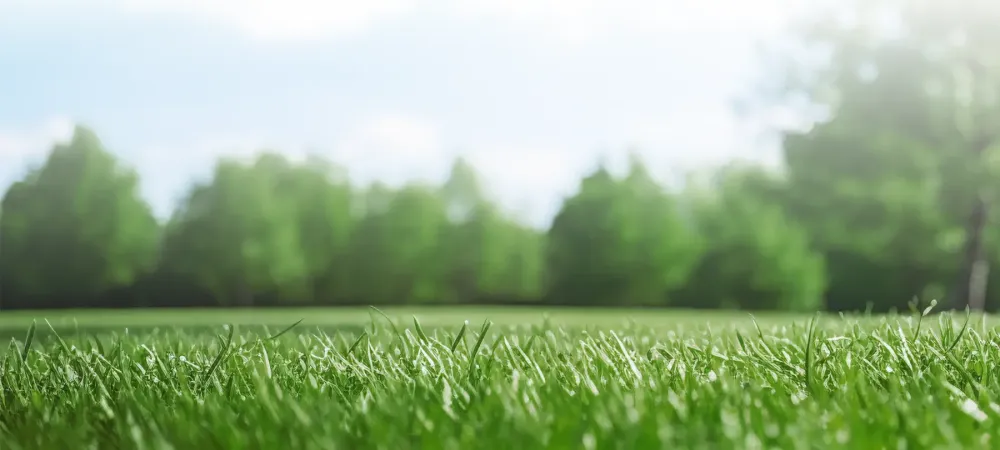Common Weeds in Tennessee

What Weeds Should I Worry About In Tennessee
Tennessee is known to have some very invasive weed species that can try and take over your lawn completely. The truth of the matter is if you’re not a lawn care expert, it may be hard to differentiate between species of weeds. For professionals, there are key differences, but to an average homeowner, they can all look somewhat similar. Depending on the weed, it will take different methods to kill them and keep them away for good. The most common types of weeds you will see in Tennessee are:
- Dandelions
- Crabgrass
- Nutsedge
- Dallisgrass
- Poa Annua
Dandelions
This type of weed can often resemble a small sunflower with its bright yellow coloration. These weeds can survive in terrible conditions because of the strong root systems they have and before you know it, you are left with a whole garden of dandelions. Dandelions can actually benefit the soil around your plants, so it is recommended that you do not pull them out of the ground unless you water your lawn beforehand. You will want to find a weed killer that is safe for other plants and apply it directly to the weed. To prevent dandelions from growing back, make sure to fertilize your grass regularly to limit weed growth activity. Make sure to control a dandelion before the seed head stage. We know it is tempting to blow off these white puffy seeds, but they can land back on your lawn and regerminate, starting the process completely over.
Crabgrass
At some point, every homeowner has had to battle the invasive weed known as crabgrass. These patches of clustering grass can appear almost anywhere and will look to stay if not taken care of. To ensure that crabgrass doesn’t pop up all over your lawn, make sure your lawn is properly maintained throughout the year. This means giving your grass the time and attention it needs to thrive, including:
- Mow frequently and at a higher height, instead of cutting it close to mow less frequently. Although it may take more time out of your week to do this, in the end, your grass will be healthier.
- Balanced fertilization throughout the entire year to ensure your lawn gets the nutrients it needs to be strong and healthy.
- Water your lawn deeply, but infrequently -- meaning let it air out before you water it again. Don’t drown out the fertilizer!
- Sod or seed bare or patchy areas as needed.
As far as sodding/seeding goes, having more grass covering your lawn cuts down on the amount of sunlight that crabgrass receives. So, by having more grass and filling in thin or bald spots quickly, the new growth will keep crabgrass out easily!
Nutsedge
Known for taking over your vegetable and flower gardens, nutsedge is one of the fastest reproducing weeds. Tennessee is known to have both yellow and purple nutsedge. Distinguishable by their spiky, triangular stems, these weeds will grow in tall clusters. They have very deep root systems (as much as 4 feet) so if you try pulling them, it will not help much. You can tackle this weed by spraying a herbicide on it, but the real problem is not getting rid of nutsedge, it is keeping it away for good. With the root systems being so strong, the best way to combat this weed will involve aerating your lawn. Nutsedge will thrive in compacted soil, so breaking it up will reduce growth activity.
Dallisgrass
While having resemblances to crabgrass, dallisgrass is a completely different type of weed that will grow fast in sandy or clay soils. Not only will this weed be bothersome for homeowners, but it is popular on public land including golf courses and sports fields. Growing in a circular clump, the roots are short which means they stay damp, leading to fast growth. Killing dallisgrass will involve 3 steps. These include:
- Proper lawn management: Make sure to water, mow, and fertilize regularly. If you encounter any bare spots around your yard, fill these in with seeding or sod to prevent any dallisgrass from taking over this spot.
- Apply Pre-Emergent: Using a similar pre-emergent to kill crabgrass, the same can be done for dallisgrass. Make sure to keep the soil watered as you apply pre-emergent
- Post-Emergent: It is important to research what kind of chemicals you are using as they could kill your turf or grass if applied too heavily. If you want to avoid any chemicals, you can dig up plants being affected by dallisgrass and treat the soil.
Poa Annua
Poa Annua, also known as annual bluegrass can be a tricky weed to get rid of. With the other weeds being most common in the warmer weather, poa annua begins to take off in the fall as the temperature starts to cool down. Annual bluegrass has flattened stems and shallow root systems, so it can be killed off using the correct pre-emergent herbicides. Make sure to apply pre-emergent before September 15th and try to find days where rain is expected in the forecast. Herbicides containing atrazine will have the most effective in stopping poa annua from sprouting any further. When applying post-emergent, use a lighter amount than for other weeds as the root system is much shorter for annual bluegrass.
Let The Professionals Help
The truth of the matter is, dealing with crabgrass and other weeds on your lawn can be extremely time-consuming and difficult. Why not leave the hard work to the professionals so you can focus on the other important things in your life? The expert lawn technicians here at Southern Spray have the tools and the knowledge to take care of all of your weed problems for good, so you don’t have to do the dirty work. Southern Spray services Memphis, TN and its surrounding areas.
